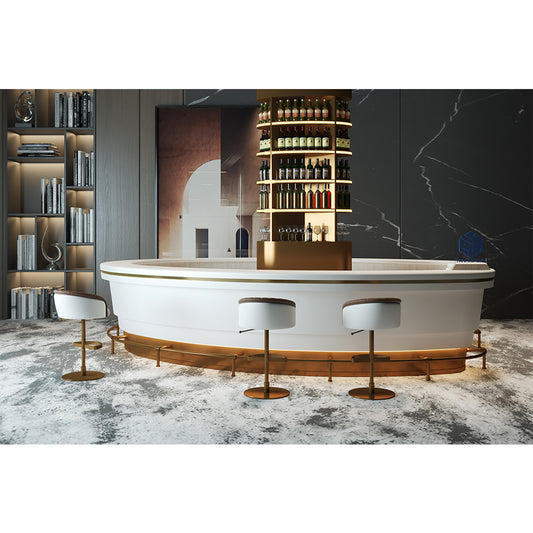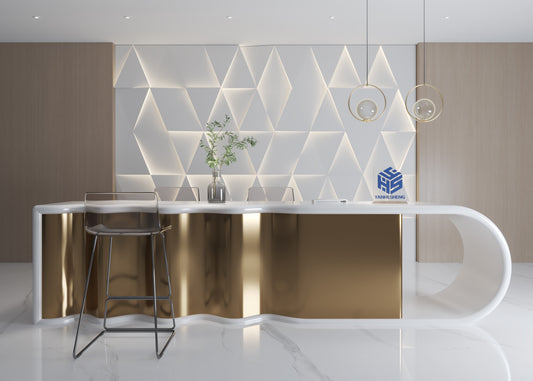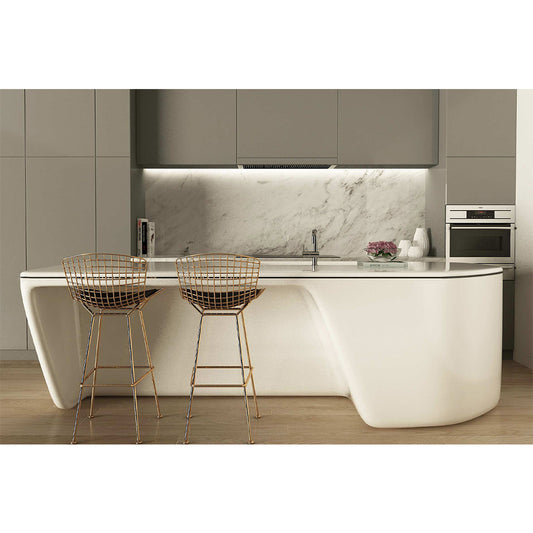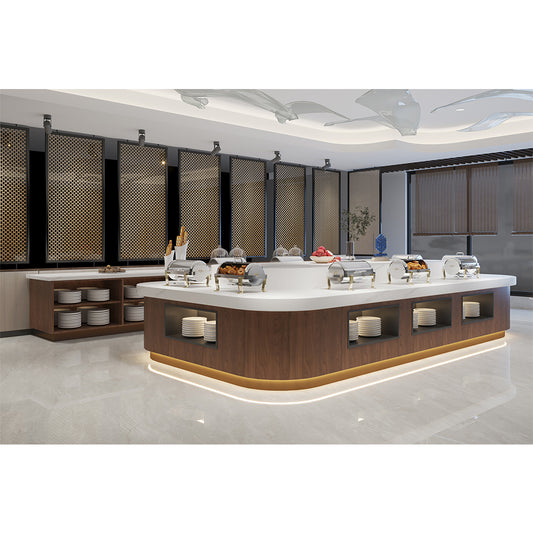Selecting the perfect bar and counter stool height is essential to creating a comfortable and visually pleasing space. Whether you’re outfitting a kitchen island, a home bar, or a counter-height dining area, the right stool height can make all the difference in both function and style. Here’s a guide to help you choose the perfect stool height for your needs.
1. Understand the Standard Heights
Before you begin your search, it’s important to understand the standard heights for counters and bars, as well as the corresponding stool heights:
-
Counter Height: Counters typically stand around 34 to 36 inches (86 to 91 cm) from the floor. Stools for these counters should have a seat height of 24 to 26 inches (61 to 66 cm) to allow for comfortable seating.
-
Bar Height: Bars or high counters usually range from 40 to 42 inches (102 to 107 cm) high. Stools for bar-height counters should have a seat height of 28 to 30 inches (71 to 76 cm).
Tip: There’s also a third category known as extra-tall bar stools, which have seat heights of 33 to 36 inches (84 to 91 cm) and are suitable for counters around 44 to 48 inches (112 to 122 cm) tall. These are less common but important to note if your bar or counter is extra tall.
2. Measure Your Counter or Bar Height
To choose the right stool, you need to start by measuring the height of your counter or bar. Use a measuring tape to determine the distance from the floor to the top of the counter. This measurement will guide you in selecting the correct stool height.
Measurement Tips:
- For counter height seating, allow about 10 to 12 inches (25 to 30 cm) of space between the seat of the stool and the underside of the counter to ensure ample legroom.
- For bar height seating, the same 10 to 12 inches (25 to 30 cm) of legroom applies.
3. Consider the Number of Stools
The number of stools you need will depend on the length of your counter or bar. To avoid crowding, leave at least 6 inches (15 cm) of space between each stool. This spacing allows people to sit comfortably without bumping elbows.
Stool Spacing Guide:
- For stools with a seat width of 16 to 18 inches (41 to 46 cm), leave about 6 inches (15 cm) between each stool.
- For stools with a seat width of 18 to 22 inches (46 to 56 cm), leave around 8 to 10 inches (20 to 25 cm) between stools.
4. Decide on the Style
Stools come in a variety of styles, from backless designs to those with full backs, arms, and even swivel features. The style you choose will impact both the comfort and the aesthetics of your space.
Style Considerations:
- Backless Stools: These are sleek and take up less visual space, making them ideal for smaller areas. However, they offer less support for extended seating.
- Stools with Backs: These provide better support and comfort, making them a great choice for spaces where people will sit for longer periods.
- Swivel Stools: These add a layer of convenience, especially in social settings, as they allow for easy movement without needing to pull the stool out.
- Armless vs. Armrests: Armless stools are easier to get in and out of, while stools with arms provide added comfort.
5. Evaluate Comfort and Durability
When choosing stools, consider who will be using them and how often. Comfort is key, especially if the stools will be used frequently or for long periods.
Comfort Factors:
- Seat Cushioning: If you’re aiming for maximum comfort, look for stools with padded seats. Hard seats can be uncomfortable for long-term use.
- Footrests: A built-in footrest can make a big difference in comfort, especially for bar-height stools, as it offers a place to rest your feet.
- Material: The material of the stool should match the durability needs of your space. For high-traffic areas, materials like metal, wood, or upholstered fabric that is easy to clean are ideal.
6. Match Your Space’s Aesthetic
Your stools should complement the overall style of your room. Whether your space is modern, rustic, or traditional, there’s a stool style to match.
Design Tips:
- Modern Spaces: Opt for sleek, minimal designs with clean lines, often in metal or molded plastic.
- Rustic or Traditional Spaces: Wood stools with rich finishes and upholstered seats can add warmth and charm.
- Industrial Spaces: Metal stools with rugged designs fit well in industrial-themed rooms.
7. Adjustable Stools: A Versatile Option
If your counter or bar height doesn’t fit within the standard measurements or if you want flexibility, consider adjustable-height stools. These stools can be raised or lowered to suit different users and counter heights.
Benefits of Adjustable Stools:
- Flexibility: Ideal for multi-use spaces where different counter heights are present or for accommodating people of various heights.
- Style: Available in a variety of designs, so you don’t have to compromise on aesthetics for functionality.
8. Test Before You Buy
Whenever possible, it’s a good idea to test the stools before purchasing. Sit on them to ensure they’re comfortable and the right height for your counter or bar.
Things to Test:
- Stability: Ensure the stool feels sturdy and balanced.
- Comfort: Check the seat height and legroom to confirm it’s comfortable for sitting.
9. Consider Maintenance and Cleaning
Think about the ease of cleaning and maintaining the stools, especially if they will be placed in a kitchen or dining area where spills are likely.
Maintenance Tips:
- Upholstered Stools: Look for fabrics that are stain-resistant or easy to clean.
- Metal or Wooden Stools: These materials are generally low-maintenance, but consider the finish and how it holds up to regular use.
Conclusion
Choosing the perfect bar or counter stool height involves more than just picking the right size; it’s about finding the balance between comfort, style, and functionality. By measuring your space accurately, considering the style that best suits your room, and thinking about comfort and maintenance, you can select stools that will not only look great but also provide a comfortable seating experience for years to come.
Whether you're furnishing a bustling kitchen or a stylish home bar, the right stools will complete your space, making it inviting and functional for everyday use.





